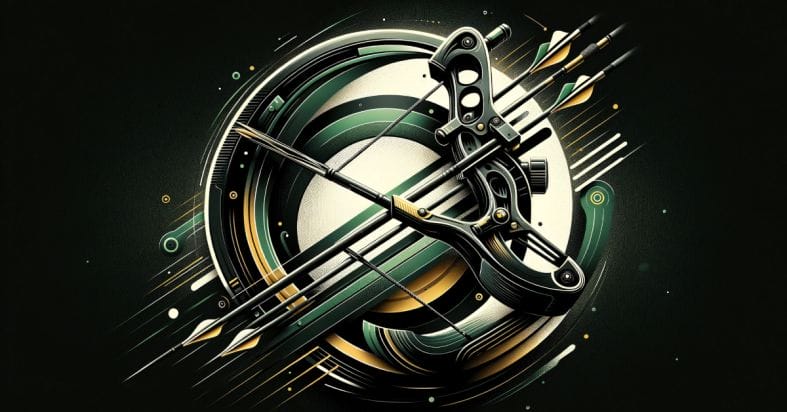It’s important to have your bow fishing arrow properly and securely set up to ensure a successful and efficient experience out on the water. From selecting the right arrow to attaching the appropriate bow fishing tip, each step plays a crucial role in your accuracy and performance. In this guide, we will walk you through the necessary steps to set up your bow fishing arrow like a pro.
Understanding Bow Fishing Arrows
Differences Between Bow Fishing and Regular Arrows
Between bow fishing and regular arrows, there are key differences that make bow fishing arrows unique. Bow fishing arrows are heavier, usually made of solid fiberglass, to withstand the impact of striking a fish and being pulled back with the catch. They are also equipped with specialized barbs to prevent the fish from slipping off once it’s been hit, unlike regular arrows used in target shooting or hunting.
Components of a Bow Fishing Arrow
Any bow fishing arrow consists of several vital components that make it effective for fishing. These components include the arrow shaft, barbed point or tip, nock, and a special reel or line attachment. The arrow shaft is typically solid fiberglass to provide durability, while the barbed point ensures the fish stays on the arrow. The nock fits onto the bowstring, allowing for a secure draw and release, and the reel or line attachment aids in retrieval of the catch.
With these components working together, a bow fishing arrow is a specialized tool designed specifically for bow fishing. Understanding the differences between bow fishing and regular arrows, as well as the components that make up a bow fishing arrow, is vital for successful bow fishing outings.
Choosing the Right Equipment
Selecting the Proper Bow for Fishing
The first step in setting up a bow fishing arrow is selecting the appropriate bow. Regarding bow fishing, you’ll want to choose a sturdy and durable bow that can handle the rigors of shooting fish in various water conditions. A compound bow with a draw weight of 40-50 pounds is usually recommended for bow fishing, as it provides enough power to penetrate through water and take down fish effectively. Make sure to consider the bow’s durability and weight, as you’ll be holding it for extended periods while out on the water.
The Role of the Reel in Bow Fishing
With bow fishing, the reel plays a crucial role in your success on the water. Bow fishing reels come in two main types: hand-wrap reels and retrieval reels. Hand-wrap reels are more traditional and require manual winding of the line after each shot, while retrieval reels automatically retrieve the line to make successive shots quicker and more efficient. Consider your shooting style and preferences when choosing the right reel for your bow fishing setup. Additionally, ensure that the reel is compatible with your chosen bow and allows for easy adjustments and line control while aiming at fish.
Understanding the importance of selecting the proper equipment for bow fishing is vital for a successful day out on the water. From choosing the right bow to selecting the appropriate reel, each piece of equipment plays a critical role in your ability to aim, shoot, and retrieve fish effectively. Take the time to research and test out different options to find the perfect combination that suits your bow fishing style and preferences.
Setting Up Your Bow Fishing Arrow
Step-by-Step Arrow Assembly
Assembly of your bow fishing arrow is crucial for optimal performance. Below is a step-by-step guide to help you set up your arrow correctly:
| Step 1 | Attach the nock to the arrow shaft. |
| Step 2 | Slide the slide onto the shaft. |
| Step 3 | Screw on the tip securely. |
Tips for Attaching Arrow Points and Slides
An necessary part of setting up your bow fishing arrow is attaching arrow points and slides correctly. Follow these tips for a successful assembly:
- Make sure the point is securely fastened to prevent it from coming loose during shooting.
- Check the alignment of the slide to ensure it moves smoothly on the arrow shaft.
- Double-check all connections before heading out to ensure everything is tightly secured.
For instance, using a small amount of glue on the threads of the tip can help prevent it from loosening over time. Any loose components can affect the accuracy and safety of your shots, so it’s necessary to pay attention to these details during assembly.
Safety and Maintenance
Safety Precautions in Bow Fishing
Your safety is paramount when engaging in bow fishing. An important precaution is to always ensure that your equipment is in good working condition before each use. Make sure your bow and arrow are well-maintained and that your line is not frayed. Additionally, always wear protective eyewear to shield your eyes from any unforeseen accidents.
Maintaining Your Bow Fishing Gear
Gear maintenance is crucial for the longevity and efficiency of your bow fishing equipment. Regularly clean your bow to prevent dirt buildup and corrosion, which can affect its performance. Inspect your arrows for any damage and replace them if necessary. Keep your reel lubricated and check the drag system to ensure smooth operation.
Fishing in saltwater can cause more wear and tear on your gear, so it is advisable to rinse your equipment with fresh water after each use and dry it thoroughly. Store your bow fishing gear in a cool, dry place away from direct sunlight to prevent any damage.
Summing up
Now that you know the necessary steps to setting up a bow fishing arrow, you’re ready to hit the water and start bow fishing. Remember to choose a suitable arrow, secure the arrowhead properly, attach the fishing line, and set the proper draw weight on your bow. By following these steps, you can ensure a successful and enjoyable bow fishing experience. Happy fishing!


